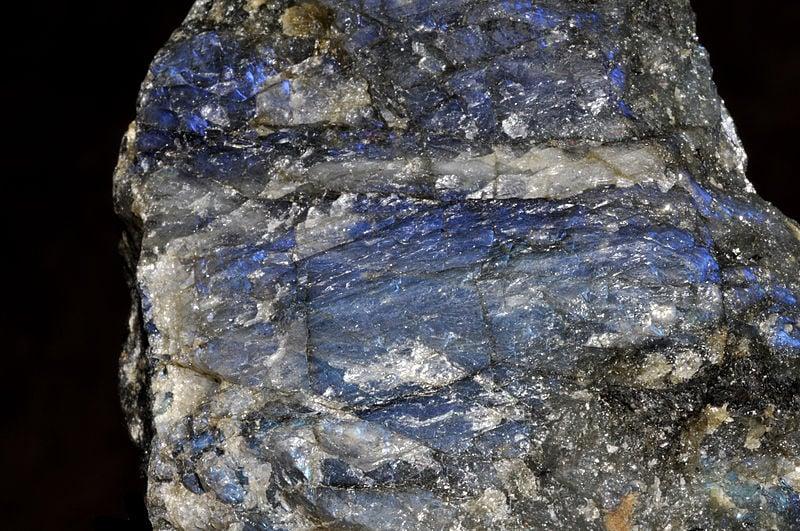Labradorite Value, Price, and Jewelry Information
An overview on Labradorite Jewelry and Gemstones. Covers details and essential information on the physical properties and characteristics of Labradorite.
2 Minute Read
An overview on Labradorite Jewelry and Gemstones. Covers details and essential information on the physical properties and characteristics of Labradorite.
Start an IGS Membership today
for full access to our price guide (updated monthly).Labradorite Value
Comments
Of all the feldspars, none besides orthoclase is as frequently encountered as a faceted gem as is labradorite. The material ranges in color from colorless to yellow, but inclusions of minerals such as hematite and copper create a wide range of other body colors. These are best known from localities in Oregon. In addition, the phenomenon of Schiller is best developed in the labradorite range of plagioclase compositions. Translucent to opaque labradorite that shows blue, green, and golden Schiller colors is widely cut by hobbyists. Labradorite with Schiller is also a component of many dark-colored igneous rocks that are used in building and construction as facing materials. Such rocks are very attractive when polished because the blue sheen of the labradorite grains flashes out at many different angles.
The Schiller in labradorite is similar to that in peristerite, but the color range includes blue, green, blue-green, gold, yellow, and purple. The color play is iridescent like the feathers of a peacock.
Faceted labradorite makes a handsome, although unusual jewelry stone. It is as hard as moonstone or any of the other feldspars that are worn regularly in jewelry, but the cleavage is always worth minding. Gems larger than 20 carats can be considered exceptional. Oregon material is abundantly available in the 2-10 carat range. Oregon gems are colorless to pale yellow but often are green or red-orange with a pink Schiller. These odd colors are due to copper and lead, and the Schiller is due to colloidal copper.
Name
Labradorite was, of course, named for its occurrence in Labrador.
Inclusions
Zircon and magnetite; also ilmenite and rutile tablets (Madagascar). Hematite inclusions create an aventurescence or sparkly effect due to reflection off of parallel included flakes. This reflection creates a rolling sheen of golden red spangles, leading to the name sunstone. Sunstone is also characteristic of oligoclase and is discussed below. Microscopic particles of metallic copper and lead account for some of the unusual colors observed in Oregon labradorite.
Pleochroism
Usually absent in feldspars but most notable in labradorite from Oregon. It is better developed in darker-colored stones:
Other Effects
A labradorite moonstone is known from Madagascar. It has a blue sheen and the indices are: a= 1.550-1.553; γ = 1.560-1.561; birefringence 0.008-0.010; S.G. 2.70.
Occurrence
- Labradorite is best known from Nain. Labrador: crystals here are up to 2 feet long, but are badly cracked.
- New York; Texas.
- Modoc County, California: facetable crystals to 1 inch.
- Finland: fine Schiller, very intense; cut stones called spectrolite.
- Clear Lake, Millard County, Utah: facetable crystals.
- Nevada: facetable crystals.
- Madagascar: moonstone effect.
- Australia: pale yellow, transparent material; indices a = 1.556, γ= 1.564; S.G. 2.695.
- Oregon: facetable; labradorite has the following properties: a = 1.559-1.563; γ = 1.569-1.573; birefringence 0.008; S.G. 2.71-2.73; material is Ab32.An68.
Stone Sizes
Labradorite rocks are available in very large sizes, suitable for facings of office buildings. This material is also sometimes cut into cabochons. Labradorite in larger crystals, with uniform Schiller (rather than in smaller, randomly oriented grains) is frequently cut into cabochons by hobbyists. The best material for this purpose comes from Finland, but the material is not common and is fairly expensive compared to other feldspars.
Faceted gems up to about 130 carats are known. It is likely that somewhat larger material exists, but fracturing of rough prevents the cutting of larger stones.
- Smithsonian Institution (Washington, D.C): 11.1 (yellow, Utah); 5.8 (yellow, Nevada); 30 (pale yellow, Idaho); 23.8 (yellow, Oregon); 39 (yellow, Oregon); 23.43 (yellow, Mexico).
- Private Collection: 62.5 (yellow, Mexico).
- Los Angeles County Museum (Los Angeles): 129 (yellow, Mexico).
Joel E. Arem, Ph.D., FGA
Dr. Joel E. Arem has more than 60 years of experience in the world of gems and minerals. After obtaining his Ph.D. in Mineralogy from Harvard University, he has published numerous books that are still among the most widely used references and guidebooks on crystals, gems and minerals in the world.
Co-founder and President of numerous organizations, Dr. Arem has enjoyed a lifelong career in mineralogy and gemology. He has been a Smithsonian scientist and Curator, a consultant to many well-known companies and institutions, and a prolific author and speaker. Although his main activities have been as a gem cutter and dealer, his focus has always been education. joelarem.com
Related Articles
Labradorite Value and Marketing Issues
Moonstone Buying Guide
Spectrolite Gem Cutting Advice
Black Diamond Value, Price, and Jewelry Information
Latest Articles
800 Years of Mogok: A Celebration in Tenuous Times
What is the Average Gemstone Faceting Yield?
Pyroxmangite Value, Price, and Jewelry Information
How to Identify Emerald Simulants and Synthetics
Never Stop Learning
When you join the IGS community, you get trusted diamond & gemstone information when you need it.
Get Gemology Insights
Get started with the International Gem Society’s free guide to gemstone identification. Join our weekly newsletter & get a free copy of the Gem ID Checklist!
